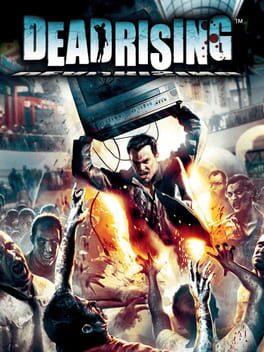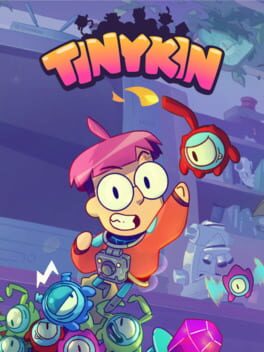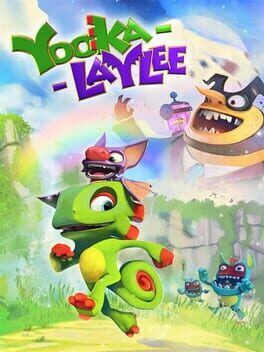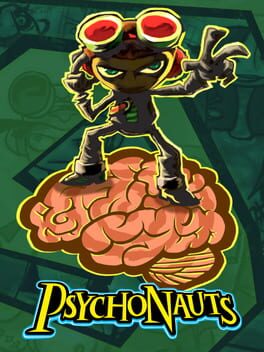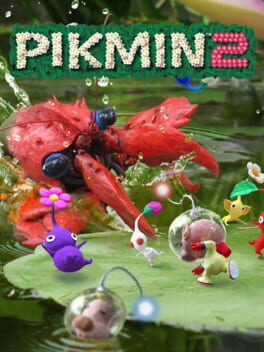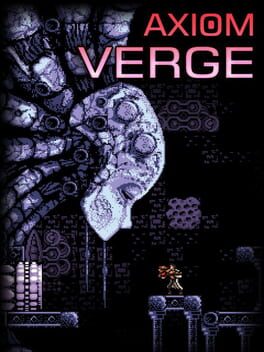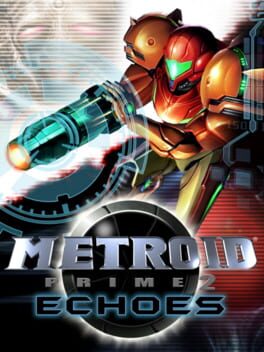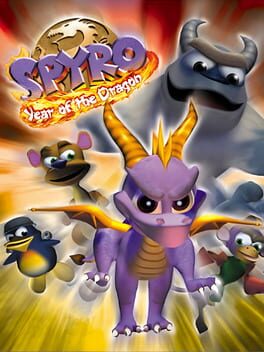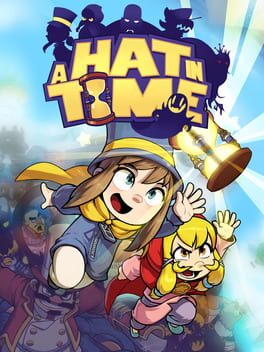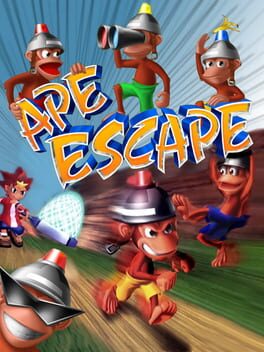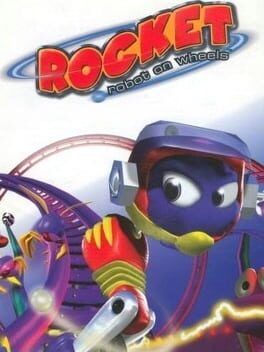Matthewmangan
2006
Dead Rising is a game I’d been wanting to check out for a while, and I wasn’t disappointed
There’s…a lot to unpack with Dead Rising
The game features journalist Frank West-he’s insane; upon hearing of a zombie outbreak in a Colorado city, he has a chopper land him on the roof of the city mall, to pick him back up in 72 hours
He’s most preoccupied with getting good photos, than trying to save survivors
The mall has numerous mechanics; the player is free to explore all the different stores, picking up different objects that can be used to kill the zombies
All of the items have different pros and cons-
Weaker objects can be kept in inventory
Large sticks can break easily
Big objects pack a punch but slow you down
Guns can only be fired standing still
Chainsaws can’t kill in one hit
Even cars eventually run out of gas
Frank can also whip his camera out and photograph the zombies, different actions, closeups, and tons of zombies in a picture can get you more points a la Pokemon Snap
Good pictures and murdering zombies gives you experience points, which improve stats such as health
The game can be saved in bathrooms, and Frank has to find food to replenish energy and change camera batteries
Secret objects like skateboards can speed up walking distance but are fragile
Dead Rising is mainly a nonlinear sandbox, but there are objectives to complete
The player can explore anywhere from the start, but this is generally unintuitive
The different areas of the mall are split between a large plaza, which is mobbed with zombies; it’s possible to escape them, but between large walking distances and hostile NPCs; it’s best to try to get to quests
Frank can help survivors and unlock shortcuts by finding keys, he can also mess around dressing up and skateboarding
Dead Rising is pretty difficult; the zombies can be stunned but still drain health, and save points are pretty far between
The game’s open-ended scope is fantastic and it’s a fun game to mess around in, with crazy characters and crazy action
I love the game’s creativity, it’s a very surreal game, with a unique setting, games with suburban settings are an interesting concept, making up gameplay from everyday objects, and the mall is so highly detailed
In terms of graphics, Dead Rising was a very early Xbox 360 game, while it makes good use of the technology with the multitude of zombie models and objects, the game certainly has uncanny character models and noisy textures, but here’s the thing-due to the mall setting, the game forgoes the brown visual style prevalent at the time for a more bright and colourful style that actually still looks pretty good
Overall, I recommend
There’s…a lot to unpack with Dead Rising
The game features journalist Frank West-he’s insane; upon hearing of a zombie outbreak in a Colorado city, he has a chopper land him on the roof of the city mall, to pick him back up in 72 hours
He’s most preoccupied with getting good photos, than trying to save survivors
The mall has numerous mechanics; the player is free to explore all the different stores, picking up different objects that can be used to kill the zombies
All of the items have different pros and cons-
Weaker objects can be kept in inventory
Large sticks can break easily
Big objects pack a punch but slow you down
Guns can only be fired standing still
Chainsaws can’t kill in one hit
Even cars eventually run out of gas
Frank can also whip his camera out and photograph the zombies, different actions, closeups, and tons of zombies in a picture can get you more points a la Pokemon Snap
Good pictures and murdering zombies gives you experience points, which improve stats such as health
The game can be saved in bathrooms, and Frank has to find food to replenish energy and change camera batteries
Secret objects like skateboards can speed up walking distance but are fragile
Dead Rising is mainly a nonlinear sandbox, but there are objectives to complete
The player can explore anywhere from the start, but this is generally unintuitive
The different areas of the mall are split between a large plaza, which is mobbed with zombies; it’s possible to escape them, but between large walking distances and hostile NPCs; it’s best to try to get to quests
Frank can help survivors and unlock shortcuts by finding keys, he can also mess around dressing up and skateboarding
Dead Rising is pretty difficult; the zombies can be stunned but still drain health, and save points are pretty far between
The game’s open-ended scope is fantastic and it’s a fun game to mess around in, with crazy characters and crazy action
I love the game’s creativity, it’s a very surreal game, with a unique setting, games with suburban settings are an interesting concept, making up gameplay from everyday objects, and the mall is so highly detailed
In terms of graphics, Dead Rising was a very early Xbox 360 game, while it makes good use of the technology with the multitude of zombie models and objects, the game certainly has uncanny character models and noisy textures, but here’s the thing-due to the mall setting, the game forgoes the brown visual style prevalent at the time for a more bright and colourful style that actually still looks pretty good
Overall, I recommend
2022
Tinykin is a very impressive indie title, with typical issues, but playing this game, it’s difficult to put it down
Tinykin takes a lot from games like Pikmin and Chibi-Robo-manoeuvring a giant house, picking up objects to put in the right place, amassing an army of little creatures with different abilities to help you
Tinykin’s worlds (or rooms) are dense and massive, it’s quite a technical feat how much there is here-though this can partly be attributed to all the characters being sprites
Graphically, the game certainly has a very stereotypical indie appearance-with pale colours and bare textures, but the creativity on display is unprecedented
Ok, the game’s level design is massive on a horizontal and vertical scale, yet it never gets tedious due to two factors-the game is fast and flexible
Ok, what’s not as good?
Well, Tinykin suffers from being a game not particularly focused on plot, trying to cram plot in at the VERY last minute-the twists certainly explain some things, but also adds more confusion, ultimately opening up sequel potential
The game’s major flaw, is that it’s virtually impossible to 100%
The game suffers from excessive lack of communication
Each room has a variety of objectives to complete
The secondary collectible-pollen-fills each room in the hundreds
Every room has a primary quest, requiring you to find the necessary items, as well as some other quests on the side
There’s artifacts to collect, letters to take to a postbox for more pollen, bubble extenders
And a ton of in-game achievements
...
The game never gives you a detector or anything to find things
There is a first-person view, which highlights certain quests with icons, and special objects as blue wireframes, but it’s still hard to locate stuff, not everything is highlighted-especially pollen
Regardless, the game is still incredibly fun despite those issues, I highly recommend it
Tinykin takes a lot from games like Pikmin and Chibi-Robo-manoeuvring a giant house, picking up objects to put in the right place, amassing an army of little creatures with different abilities to help you
Tinykin’s worlds (or rooms) are dense and massive, it’s quite a technical feat how much there is here-though this can partly be attributed to all the characters being sprites
Graphically, the game certainly has a very stereotypical indie appearance-with pale colours and bare textures, but the creativity on display is unprecedented
Ok, the game’s level design is massive on a horizontal and vertical scale, yet it never gets tedious due to two factors-the game is fast and flexible
Ok, what’s not as good?
Well, Tinykin suffers from being a game not particularly focused on plot, trying to cram plot in at the VERY last minute-the twists certainly explain some things, but also adds more confusion, ultimately opening up sequel potential
The game’s major flaw, is that it’s virtually impossible to 100%
The game suffers from excessive lack of communication
Each room has a variety of objectives to complete
The secondary collectible-pollen-fills each room in the hundreds
Every room has a primary quest, requiring you to find the necessary items, as well as some other quests on the side
There’s artifacts to collect, letters to take to a postbox for more pollen, bubble extenders
And a ton of in-game achievements
...
The game never gives you a detector or anything to find things
There is a first-person view, which highlights certain quests with icons, and special objects as blue wireframes, but it’s still hard to locate stuff, not everything is highlighted-especially pollen
Regardless, the game is still incredibly fun despite those issues, I highly recommend it
2017
Yooka Laylee
Helmed by former Rare crew, the developer Playtonic crowdfunded the game as a spiritual successor to Banjo Kazooie
Once the game released-reception was mixed
Having played it twice, I can see the critiques, but I had a lot of fun with it
Let’s begin with the good-Yooka and Laylee control really well, they’re fast and snappy compared to the admittedly very slow and bulky Banjo and Kazooie
Their moveset is based around their lizard-bat combination, Yooka can eat plants with his tongue for temporary power-ups, and later use it as a grappling hook
He can throw Laylee into the air to propel them off the ground
He can bounce with his tail
Double jump, hover and spin
Yooka can roll into a ball that Laylee rolls on
Laylee’s abilities focus on echoing powers-she can reveal invisible platforms and stun enemies with a shriek
One thing I love about the platforming is how the game lets you climb anything-every rock ledge has collision detection
Upgrades are gained by collecting quills and spending them on moves taught by Trowzer the snake-one of many NPCs who appear in each level
Others include Kartos the minecart, Rextro the retro dinosaur, Dr Puzz, and Vendi the vending machine
There are also the Ghostwriters-the equivalent of Banjo’s Jinjos-who are caught in different ways
The graphics are fantastic-colourful huge levels that manage to be easy to traverse, you’ll rarely lose track of where everything is
I’m incredibly surprised at how uncompromised the Switch port is-little in the way of visual sacrifices, the game still runs well aside from a few stutters, it’s impressive
There are a lot of neat ideas-a giant casino level, galactic pirates, even a dungeon at one point that pays homage to Rare’s early title Knight Lore
The game uses the same captioned gibberish as Banjo, as well as Grant Kirkhope returning for the soundtrack
Now what about things that aren’t quite good?
Let’s break down the gameplay-Pagies are collected to unlock new levels and expand old ones
The game’s jiggy equivalent-pagies are found by completing various objectives-which arises one of the game’s core issues-it matches Banjo too close with many of the objectives being mediocre minigames
Minecarts, races, awkward puzzles, timed challenges, slide rooms, they aren’t that great
But I will say this-you more often than not can just go find an easier or more fun Pagie to collect, and the levels are still fun to explore
Also-a number of challenges can actually be cheesed by coming back later with the flight ability
Enemies can be pretty annoying, Rextro’s minigames are very meh, the minecart sections are awkward but simple score challenges
The transformations from Banjo Kazooie are included-I like how they incorporate both characters this time, but they’re mixed
The plant is just use for one Pagie really, Snowplow and Pirate Ship are used to clear rubble throughout the stage, which is fine, the Piranhas are cool, and then there’s the Helicopter, which is awesome
There’s a lot of neat stuff in Yooka Laylee-I won’t deny its inconsistency, there was more they could have done with a modern Banjo Kazooie, but it’s still an enjoyable time
Helmed by former Rare crew, the developer Playtonic crowdfunded the game as a spiritual successor to Banjo Kazooie
Once the game released-reception was mixed
Having played it twice, I can see the critiques, but I had a lot of fun with it
Let’s begin with the good-Yooka and Laylee control really well, they’re fast and snappy compared to the admittedly very slow and bulky Banjo and Kazooie
Their moveset is based around their lizard-bat combination, Yooka can eat plants with his tongue for temporary power-ups, and later use it as a grappling hook
He can throw Laylee into the air to propel them off the ground
He can bounce with his tail
Double jump, hover and spin
Yooka can roll into a ball that Laylee rolls on
Laylee’s abilities focus on echoing powers-she can reveal invisible platforms and stun enemies with a shriek
One thing I love about the platforming is how the game lets you climb anything-every rock ledge has collision detection
Upgrades are gained by collecting quills and spending them on moves taught by Trowzer the snake-one of many NPCs who appear in each level
Others include Kartos the minecart, Rextro the retro dinosaur, Dr Puzz, and Vendi the vending machine
There are also the Ghostwriters-the equivalent of Banjo’s Jinjos-who are caught in different ways
The graphics are fantastic-colourful huge levels that manage to be easy to traverse, you’ll rarely lose track of where everything is
I’m incredibly surprised at how uncompromised the Switch port is-little in the way of visual sacrifices, the game still runs well aside from a few stutters, it’s impressive
There are a lot of neat ideas-a giant casino level, galactic pirates, even a dungeon at one point that pays homage to Rare’s early title Knight Lore
The game uses the same captioned gibberish as Banjo, as well as Grant Kirkhope returning for the soundtrack
Now what about things that aren’t quite good?
Let’s break down the gameplay-Pagies are collected to unlock new levels and expand old ones
The game’s jiggy equivalent-pagies are found by completing various objectives-which arises one of the game’s core issues-it matches Banjo too close with many of the objectives being mediocre minigames
Minecarts, races, awkward puzzles, timed challenges, slide rooms, they aren’t that great
But I will say this-you more often than not can just go find an easier or more fun Pagie to collect, and the levels are still fun to explore
Also-a number of challenges can actually be cheesed by coming back later with the flight ability
Enemies can be pretty annoying, Rextro’s minigames are very meh, the minecart sections are awkward but simple score challenges
The transformations from Banjo Kazooie are included-I like how they incorporate both characters this time, but they’re mixed
The plant is just use for one Pagie really, Snowplow and Pirate Ship are used to clear rubble throughout the stage, which is fine, the Piranhas are cool, and then there’s the Helicopter, which is awesome
There’s a lot of neat stuff in Yooka Laylee-I won’t deny its inconsistency, there was more they could have done with a modern Banjo Kazooie, but it’s still an enjoyable time
2005
Psychonauts is widely deemed a cult classic, its success was a happy accident
Psychonauts had a troubled development, Tim Schafer was already known for his acclaimed PC graphic adventure titles Day of the Tentacle, Full Throttle and Grim Fandango at LucasArts; upon founding his own studio, Double Fine, in 2000, production began on a 3D platformer, a strong subversion of his prior work
Planned as an Xbox exclusive, Microsoft dropped out as publisher in 2004, instead being replaced by Majesco; budgetary struggles occurred throughout the 4-year development before the game finally released in 2005 for Xbox, PS2 and PC
As an obscure project, the game saw poor sales, but nonetheless saw a digital Steam release in 2006, which Double Fine expanded in 2011; at this point, the game saw major newfound success
This success can generate interpretations
For one, it subverted typical game discourse
People started applauding the game as one of the best they’d ever played-unheard of for the type of game
What do I mean by that?
Let’s look at the original Super Mario Bros, the game credited with saving the game industry-it was a strange, cartoony platformer that people were hooked on
Subsequent titles for the NES cemented more genres-shooter, fantasy, RPG, horror, sci-fi
Mega Man, Zelda, Final Fantasy, Castlevania, Metroid
All these games were equally revolutionary but many of them restricted themselves to their genres
A restriction that made them play-it-safe, and less goofy
These genres evolved to be grittier-and as such, taken more seriously than platformers, and also less creative
People continued to praise the Mario series, Sonic as well, but didn’t care at all about games similar to it
Colourful, goofy or creative games were deemed babyish or irrelevant
Look at the RPG genre-nearly all games in this genre keep to a formula of medieval, sword, castle, dragon, fetch quests, these were play-it-safe elements that were sure to keep people’s attention
Shooters evolved into the first-person genre with the success of Wolfenstein and Doom-all very gritty and militarised
These games weren’t bad, but they were repetitive, creativity stagnated from public eye
It occurred again with Super Mario 64
The game cemented a collectathon genre, where the worlds are filled with straightforward objectives rewarded with collectibles
In came titles like Ocarina of Time-forgoing such in favour of a more convoluted formula with more restrictive settings
Stealth games like Metal Gear Solid, open world city titles like Grand Theft Auto, the growing dominance of first-person shooters
There was little room for more creative or high-concept titles
There’s plenty of 3D platformers of that era similar to Psychonauts not held in similar regard-Ape Escape, Sly Cooper, Ratchet and Clank, Blinx, Jak and Daxter
Mario, Sonic or Rayman titles are remembered pretty much only for series bias, or Banjo and Conker mainly company bias
The only high-concept game of the era that saw similar cult following is Katamari
There’s other unique games to name-Okami, Dead Rising, Portal, Bully, Bioshock, but these keep closer to conventional genres
Two-people can quickly deem it overrated
Critics can find it easy to deem the game janky or repetitive-“it doesn’t meet their interests, jankiness makes a game bad”
Platformers are a very versatile genre, with very little restraints, and they can be crossed with others
One of the key aspects that I think got people’s attention with Psychonauts is how it’s very story-based-the game features a lot of dialogue during gameplay and cutscenes as well, with many different characters to meet
Psychonauts is exceptionally different and filled with passion, everything corresponds to the plot
Let’s start there
Psychonauts is surreal and Tim Burton-esque, it follows the young psychic Raz, who has run away from home to attend a psychic summer camp to become a Psychonaut agent
The levels take place inside different characters’ heads and are based all around their personalities and issues
Everything from a twisted neighbourhood, attacking a city of sea monsters and a giant board game are explored in the game
The gameplay then-there’s not exactly much to say, you run around collecting figments in these open levels, you gain new abilities like a ball to roll on or a parachute
The gameplay didn’t really need to be anything more, the worlds make the game, you can find pages that reveal context behind each story, boss fights, level gimmicks and the like
Psychonauts is a great game, not the best, but filled with passion
Psychonauts had a troubled development, Tim Schafer was already known for his acclaimed PC graphic adventure titles Day of the Tentacle, Full Throttle and Grim Fandango at LucasArts; upon founding his own studio, Double Fine, in 2000, production began on a 3D platformer, a strong subversion of his prior work
Planned as an Xbox exclusive, Microsoft dropped out as publisher in 2004, instead being replaced by Majesco; budgetary struggles occurred throughout the 4-year development before the game finally released in 2005 for Xbox, PS2 and PC
As an obscure project, the game saw poor sales, but nonetheless saw a digital Steam release in 2006, which Double Fine expanded in 2011; at this point, the game saw major newfound success
This success can generate interpretations
For one, it subverted typical game discourse
People started applauding the game as one of the best they’d ever played-unheard of for the type of game
What do I mean by that?
Let’s look at the original Super Mario Bros, the game credited with saving the game industry-it was a strange, cartoony platformer that people were hooked on
Subsequent titles for the NES cemented more genres-shooter, fantasy, RPG, horror, sci-fi
Mega Man, Zelda, Final Fantasy, Castlevania, Metroid
All these games were equally revolutionary but many of them restricted themselves to their genres
A restriction that made them play-it-safe, and less goofy
These genres evolved to be grittier-and as such, taken more seriously than platformers, and also less creative
People continued to praise the Mario series, Sonic as well, but didn’t care at all about games similar to it
Colourful, goofy or creative games were deemed babyish or irrelevant
Look at the RPG genre-nearly all games in this genre keep to a formula of medieval, sword, castle, dragon, fetch quests, these were play-it-safe elements that were sure to keep people’s attention
Shooters evolved into the first-person genre with the success of Wolfenstein and Doom-all very gritty and militarised
These games weren’t bad, but they were repetitive, creativity stagnated from public eye
It occurred again with Super Mario 64
The game cemented a collectathon genre, where the worlds are filled with straightforward objectives rewarded with collectibles
In came titles like Ocarina of Time-forgoing such in favour of a more convoluted formula with more restrictive settings
Stealth games like Metal Gear Solid, open world city titles like Grand Theft Auto, the growing dominance of first-person shooters
There was little room for more creative or high-concept titles
There’s plenty of 3D platformers of that era similar to Psychonauts not held in similar regard-Ape Escape, Sly Cooper, Ratchet and Clank, Blinx, Jak and Daxter
Mario, Sonic or Rayman titles are remembered pretty much only for series bias, or Banjo and Conker mainly company bias
The only high-concept game of the era that saw similar cult following is Katamari
There’s other unique games to name-Okami, Dead Rising, Portal, Bully, Bioshock, but these keep closer to conventional genres
Two-people can quickly deem it overrated
Critics can find it easy to deem the game janky or repetitive-“it doesn’t meet their interests, jankiness makes a game bad”
Platformers are a very versatile genre, with very little restraints, and they can be crossed with others
One of the key aspects that I think got people’s attention with Psychonauts is how it’s very story-based-the game features a lot of dialogue during gameplay and cutscenes as well, with many different characters to meet
Psychonauts is exceptionally different and filled with passion, everything corresponds to the plot
Let’s start there
Psychonauts is surreal and Tim Burton-esque, it follows the young psychic Raz, who has run away from home to attend a psychic summer camp to become a Psychonaut agent
The levels take place inside different characters’ heads and are based all around their personalities and issues
Everything from a twisted neighbourhood, attacking a city of sea monsters and a giant board game are explored in the game
The gameplay then-there’s not exactly much to say, you run around collecting figments in these open levels, you gain new abilities like a ball to roll on or a parachute
The gameplay didn’t really need to be anything more, the worlds make the game, you can find pages that reveal context behind each story, boss fights, level gimmicks and the like
Psychonauts is a great game, not the best, but filled with passion
2004
Pikmin 2 is the exact type of black sheep that divides people-love it for being different or hate it for being different
It’s decent
Pikmin 2 has a lot to unpack, it’s lighter in tone and streamlined, time limit is no longer an obstacle, there’s 201 treasures to collect-each a different trinket varying from product placements to Nintendo easter eggs
There’s several design choices that are debated, some things make the game feel less special, but others may argue they didn’t just want to make the same game twice
Pikmin 2 gives you two playable characters, but not much is really done with them, the UI is great, there’s a lot of cool extra content, but none of this is the root of the game
The root of the game is the caves
While there’s still a few treasures to get above ground, the surface areas feel a lot smaller, and are not the focus at all
Pikmin 2’s focus is the 14 caves you find in the overworlds
3 in Valley of Repose
4 in Awakening Wood
4 in Perplexing Pool
3 in Wistful Wild
These caves contain 175 of the game’s 201 treasures, spread across 105 floors
In these caves, logic goes out the window, as you land in gardens, kids’ bedrooms, water drains, swamps and cabins
Candypop Buds in caves are the only way to make the new Pikmin types-Purples and Whites
Purple Pikmin-bulky but slow, these guys are great fighters and ten times stronger than other Pikmin, but they are vulnerable to all hazards
White Pikmin-small with big red bug eyes, whites are fast, can dig up treasures and are immune to poison, but they are weak, however, if eaten, they poison the enemy
Bulbmin-a sixth type found in certain caves, bulbmin are small bulborbs with leaves like Pikmin, they become part of your army once you defeat the large one, and are immune to all hazards-but they cannot be taken above ground, unless you use candypops to turn them into normal Pikmin
These new types exhibit the clear pros and cons you’d expect in a strategy game
So how do the caves work?
Well-time freezes
The game automatically saves whenever you enter or exit, and saves progress when you go down to a different sublevel-but if you quit a cave, that progress is erased
You need to use springs to exit and save-either at the last sublevel, or on an earlier floor for if you want to stop early if low on Pikmin
The caves have several objectives and obstacles
Get the treasure
Get to the next hole
Keep your Pikmin alive
In your path are vicious enemies and traps such as falling rocks and ambushes
Enemies can squish and throw bombs at Pikmin, who for the most part cannot be regrown in the caves, you’ll reset quite a lot
Hazards are also prevalent-fire for reds, water for blues, but there’s also now poison, which whites are needed for, and electricity, which yellows are used for, electricity is the insta-kill hazard, the others send Pikmin into a frenzy until death unless they are whistled back
The caves can go on for a while, and not all of them are the most inspired, but there is still strategy in picking the right numbers of each type for each cave
I don’t have a lot to say, Pikmin 2 has its flaws, but is not at all bad, the game just goes on for a while and doesn’t have the best ideas
It’s decent
Pikmin 2 has a lot to unpack, it’s lighter in tone and streamlined, time limit is no longer an obstacle, there’s 201 treasures to collect-each a different trinket varying from product placements to Nintendo easter eggs
There’s several design choices that are debated, some things make the game feel less special, but others may argue they didn’t just want to make the same game twice
Pikmin 2 gives you two playable characters, but not much is really done with them, the UI is great, there’s a lot of cool extra content, but none of this is the root of the game
The root of the game is the caves
While there’s still a few treasures to get above ground, the surface areas feel a lot smaller, and are not the focus at all
Pikmin 2’s focus is the 14 caves you find in the overworlds
3 in Valley of Repose
4 in Awakening Wood
4 in Perplexing Pool
3 in Wistful Wild
These caves contain 175 of the game’s 201 treasures, spread across 105 floors
In these caves, logic goes out the window, as you land in gardens, kids’ bedrooms, water drains, swamps and cabins
Candypop Buds in caves are the only way to make the new Pikmin types-Purples and Whites
Purple Pikmin-bulky but slow, these guys are great fighters and ten times stronger than other Pikmin, but they are vulnerable to all hazards
White Pikmin-small with big red bug eyes, whites are fast, can dig up treasures and are immune to poison, but they are weak, however, if eaten, they poison the enemy
Bulbmin-a sixth type found in certain caves, bulbmin are small bulborbs with leaves like Pikmin, they become part of your army once you defeat the large one, and are immune to all hazards-but they cannot be taken above ground, unless you use candypops to turn them into normal Pikmin
These new types exhibit the clear pros and cons you’d expect in a strategy game
So how do the caves work?
Well-time freezes
The game automatically saves whenever you enter or exit, and saves progress when you go down to a different sublevel-but if you quit a cave, that progress is erased
You need to use springs to exit and save-either at the last sublevel, or on an earlier floor for if you want to stop early if low on Pikmin
The caves have several objectives and obstacles
Get the treasure
Get to the next hole
Keep your Pikmin alive
In your path are vicious enemies and traps such as falling rocks and ambushes
Enemies can squish and throw bombs at Pikmin, who for the most part cannot be regrown in the caves, you’ll reset quite a lot
Hazards are also prevalent-fire for reds, water for blues, but there’s also now poison, which whites are needed for, and electricity, which yellows are used for, electricity is the insta-kill hazard, the others send Pikmin into a frenzy until death unless they are whistled back
The caves can go on for a while, and not all of them are the most inspired, but there is still strategy in picking the right numbers of each type for each cave
I don’t have a lot to say, Pikmin 2 has its flaws, but is not at all bad, the game just goes on for a while and doesn’t have the best ideas
2015
Axiom Verge is a fantastic Metroidvania, no, it doesn’t do much unique, but honestly, I feel that works in its favour, it doesn’t put in RPG-ish gimmicks, it just gives you fun weapons and gadgets, presented with brilliant pixel art
It’s easy to get lost, the bosses are quite confusing, the map is restrictive, but I’d say it’s a good time
It’s easy to get lost, the bosses are quite confusing, the map is restrictive, but I’d say it’s a good time
2021
11 years since the last original main Metroid instalment, 19 years since the last original 2D Metroid, Dread came out of nowhere as the crowd-pleasing surprise of E3 2021
Dread was teased as the DS sequel to Metroid Fusion in the mid-2000s, but quickly vaporised
For 19 years Fusion was the last game in the franchise timeline, particularly due to Metroid’s rocky history
The original Metroid came out in 1986 on the NES-the game was ambitious, taking the side-scroller formula and twisting it to a non-linear style, you didn’t just go right, you went left, and up, and down
You had to collect upgrades to get through to new areas, unlike the power ups in Mario, these were permanent additions you’d keep for the whole game
But-it was also very, very janky, I might discuss the game at some point, but from the limited gun aiming, the enemies draining health, and barely dropping any back, the lack of a map or totals screens, copied room designs with little in them, it’s a bit tricky to play
The game did not gain the traction that series like Mario, Zelda, Castlevania or Mega Man did
Nonetheless, it saw a sequel, Return of Samus, five years later on the Game Boy
Considered a stellar improvement, the game didn’t do too well financially either
Then, in 1994, came Super Metroid on the SNES
Widely acclaimed as one of the greats of its era, Super Metroid managed to polish the rough edges of its predecessors to create a total classic
Then the series vanished for eight years
It wasn’t until 2002, that two new Metroid titles would be released on the same day
A 2D sequel to Super Metroid-Metroid Fusion, released on the Game Boy Advance-twisting things up with comic-book-esque colourful pixel art, a higher focus on story, and even some stealth/horror elements
And on the GameCube, the series’ 3D debut, Metroid Prime
Prime was a collaboration between some Metroid veterans and a recently formed Texas-based team working for Nintendo, Retro Studios
Though controversially its development saw some crunch, the game came out fantastic
The formula was brought into 3D near perfectly, the graphics, the upgrades, the music, the eerie vibes
Then in 2004, came two more titles, Metroid Prime 2 Echoes on the GameCube, and Metroid Zero Mission on Game Boy Advance-a reimagining of the NES original
Following this were spin-offs, Pinball and Hunters on the DS in 2005 and 2006, then Metroid Prime 3 Corruption on the Wii in 2007, and then Metroid Other M on the Wii in 2010
Though the titles certainly got a bit more polarising, and it’s success was never groundbreaking commercially, for a series to vanish for eight years to come back with eight instalments in eight years is unthinkable
Then the franchise vanished again-for another six
In 2016, a new spin-off title emerged, Metroid Prime Federation Force on the 3DS, to mediocre reception, its release contrasted Nintendo’s controversial tactic to shut down AM2R, an acclaimed fan remake of Metroid II, and the next year, Nintendo suspiciously released an official Metroid II remake on the 3DS, Samus Returns
No, there was no correlation between these two projects, and in fact, Samus Returns was seen as a return to form for the series
Unfortunately...it was a 3DS game in 2017
No, that’s no excuse as to why no one bought it, but I think it can be agreed that it would have been far more effective to at least port the game to the Switch-especially with the Metroid Prime 4 reveal at that E3; reviewers did note disdain of the blurry graphics and especially 30fps framerate, that’s not to say the 3DS was an incapable system, but at that point in its life, it had been so oversaturated with predominantly full 2D titles that developers weren’t really trying with its hardware
It’s been 5 years since Prime 4 was announced, and fans are still waiting for any new info
Many may even fear it’s been shelved-of course it hasn’t, the team wish to take their time and get it out when it’s ready, and a reveal should certainly be on its way
E3 2021
A pretty terrible time in the world, and fans were waiting on something related to Metroid, worried that the Covid pandemic may have disrupted production
What Nintendo showed was the centrepiece of the whole event
A blue suited Samus appears, and typed are the words Metroid 5
Attacked by a robot, the trailer reveals the game’s 2.5D nature, and its chase elements
As Samus is cornered and attacked, the title is revealed
Metroid Dread
Coming October
If you got all that, I think we can finally get into the game
For starters, the game retains the parry attacks from Samus Returns, Samus can slap enemies, stun them for a quick kill and extra drops, and a twinkle when an enemy is preparing to attack signals the window to fight back
The robots shown in the reveal are EMMIs, they patrol a sector of each level, and hold a different upgrade, Samus must use stealth and platforming to evade them, but if they catch you, you can still escape by performing a very difficult parry
Finding the “brain” chamber, you can temporarily upgrade your beam to destroy each EMMI, and take their power
Samus’s controls have been overhauled, very snappy and fast-paced; as timeless as Super Metroid is, as a 1994 SNES game it does have a restricted stiffness to Samus’s movements, Dread sees quality of life improvements such as gripping onto ledges, sliding between gaps, and a free aim mode when standing still (and wall jumps are far easier)
A ton of new upgrades appear, and old ones have been updated
Some of the game’s coolest puzzles involve timing wall-jumps to retain a shinespark through multiple rooms, Samus can also now ‘ballspark’-shinespark in morph ball mode
Speaking of morph ball, the ball jump-the most pointless upgrade in Super Metroid-is built-in
Seeker missiles from Metroid Prime 2 make a 2D return, named Storm Missiles, now with more use in combat
Cross-bombs can be used to zoom across pitfall traps
The ice beam is now a missile rather than regular beam upgrade
What about new abilities?
Phantom Cloak-only really used for a few doors and evading EMMIs, it makes Samus invisible for a limited time
Spider Magnet-Samus can now stick to certain blue walls and ceilings, and grapple up them, pull them down, or ride them up
My personal favourite-the Flash Shift
Samus can zoom across the screen three times in a row, it feels great to use, and can even be done in mid-air
Pulse Radar-Similar to Super Metroid’s X-Ray Scope, Pulse can reveal hidden blocks
An issue I feel with these upgrades is-when replaying the game, Samus feels incredibly dull and weak
Yes, that’s what the game is about, collecting each upgrade to get stronger, but I feel a compromise should have been made, at least something like Flash Shift earlier
Super Metroid did it right, the initial chamber in Crateria gives you morph ball and missile-the two primary elements of Samus’s arsenal, then the ramp and elevator are taken down to Brinstar, followed by dropping down the red chamber into Norfair, where the bulk of upgrades are found in a perfectly brisk yet satisfying order
This does result in the upgrades running low once you get to Maridia, but the game remains so fun to explore that it’s ok
Dread’s early levels by comparison, have a LOT of back and forth, and it’s not great
There are elements of sequence breaking, but it doesn’t help much, the game just doesn’t really pick up until you get the Speed Booster, but when the game picks up, it really picks up
Super Metroid’s worst flaw was not keeping track of the collectibles you’ve gotten, areas you’ve been are marked pink, and pick-ups are white dots-which do not disappear once you’ve gotten them, considering a lot of collectibles are carefully hidden, you WILL forget things; the game doesn’t tell you your percentage until after the credits
Dread meanwhile keeps track of item collection in each level, with a percentage counter, and areas of the map where things are hidden flash white; add markers to that and this makes it near impossible to forget anything
Then there’s the graphics-I feel it’s a bit inconsistent
Dread is the first Metroid game on an HD console, and the developers at MercurySteam manage to aim for 60fps
Dread is a 2.5D game in the sense that the game is rendered completely in 3D, but gameplay is completely 2D
The sets look pretty great, but the visuals are mixed in my opinion
Dread can look quite overexposed at times, I recommend setting the brightness lower
On top of that, despite the models being really good, I feel the texture work doesn’t do them justice, they look very flat and the light maps used even flatter
The biggest issue though is the game’s colour palette-Metroid has always been a colourful series, even the original was one of the more colourful games on the NES
The Prime games are a tad murkier but the detail makes up for it
Dread rarely ventures beyond grays and browns
There’s only two levels that are a bit more visually striking-Burenia and Ghavoran
The game’s still sharp, but these are certainly bludgeons on the game’s art style
Then there’s the plot-Dread is the first game in the franchise set after Fusion, and is considered the finale of the main saga, though I’m pretty sure there will be games set after it, just unfortunately probably not Prime 4, as the Prime titles are set earlier on
Samus meets new characters and elements from Fusion such as the X-Parasite return, I’m not gonna spoil anything, but the ending is incredibly confusing and anticlimactic
Overall, the game may feel just a tiny bit too streamlined, the atmosphere overall is nowhere near as rich as prior games, and I feel some 2.5D elements may have spiced things up
Dread improves some things and disimproves others, but one thing’s for sure, it’s still a fantastic and well-made return to form
Dread was teased as the DS sequel to Metroid Fusion in the mid-2000s, but quickly vaporised
For 19 years Fusion was the last game in the franchise timeline, particularly due to Metroid’s rocky history
The original Metroid came out in 1986 on the NES-the game was ambitious, taking the side-scroller formula and twisting it to a non-linear style, you didn’t just go right, you went left, and up, and down
You had to collect upgrades to get through to new areas, unlike the power ups in Mario, these were permanent additions you’d keep for the whole game
But-it was also very, very janky, I might discuss the game at some point, but from the limited gun aiming, the enemies draining health, and barely dropping any back, the lack of a map or totals screens, copied room designs with little in them, it’s a bit tricky to play
The game did not gain the traction that series like Mario, Zelda, Castlevania or Mega Man did
Nonetheless, it saw a sequel, Return of Samus, five years later on the Game Boy
Considered a stellar improvement, the game didn’t do too well financially either
Then, in 1994, came Super Metroid on the SNES
Widely acclaimed as one of the greats of its era, Super Metroid managed to polish the rough edges of its predecessors to create a total classic
Then the series vanished for eight years
It wasn’t until 2002, that two new Metroid titles would be released on the same day
A 2D sequel to Super Metroid-Metroid Fusion, released on the Game Boy Advance-twisting things up with comic-book-esque colourful pixel art, a higher focus on story, and even some stealth/horror elements
And on the GameCube, the series’ 3D debut, Metroid Prime
Prime was a collaboration between some Metroid veterans and a recently formed Texas-based team working for Nintendo, Retro Studios
Though controversially its development saw some crunch, the game came out fantastic
The formula was brought into 3D near perfectly, the graphics, the upgrades, the music, the eerie vibes
Then in 2004, came two more titles, Metroid Prime 2 Echoes on the GameCube, and Metroid Zero Mission on Game Boy Advance-a reimagining of the NES original
Following this were spin-offs, Pinball and Hunters on the DS in 2005 and 2006, then Metroid Prime 3 Corruption on the Wii in 2007, and then Metroid Other M on the Wii in 2010
Though the titles certainly got a bit more polarising, and it’s success was never groundbreaking commercially, for a series to vanish for eight years to come back with eight instalments in eight years is unthinkable
Then the franchise vanished again-for another six
In 2016, a new spin-off title emerged, Metroid Prime Federation Force on the 3DS, to mediocre reception, its release contrasted Nintendo’s controversial tactic to shut down AM2R, an acclaimed fan remake of Metroid II, and the next year, Nintendo suspiciously released an official Metroid II remake on the 3DS, Samus Returns
No, there was no correlation between these two projects, and in fact, Samus Returns was seen as a return to form for the series
Unfortunately...it was a 3DS game in 2017
No, that’s no excuse as to why no one bought it, but I think it can be agreed that it would have been far more effective to at least port the game to the Switch-especially with the Metroid Prime 4 reveal at that E3; reviewers did note disdain of the blurry graphics and especially 30fps framerate, that’s not to say the 3DS was an incapable system, but at that point in its life, it had been so oversaturated with predominantly full 2D titles that developers weren’t really trying with its hardware
It’s been 5 years since Prime 4 was announced, and fans are still waiting for any new info
Many may even fear it’s been shelved-of course it hasn’t, the team wish to take their time and get it out when it’s ready, and a reveal should certainly be on its way
E3 2021
A pretty terrible time in the world, and fans were waiting on something related to Metroid, worried that the Covid pandemic may have disrupted production
What Nintendo showed was the centrepiece of the whole event
A blue suited Samus appears, and typed are the words Metroid 5
Attacked by a robot, the trailer reveals the game’s 2.5D nature, and its chase elements
As Samus is cornered and attacked, the title is revealed
Metroid Dread
Coming October
If you got all that, I think we can finally get into the game
For starters, the game retains the parry attacks from Samus Returns, Samus can slap enemies, stun them for a quick kill and extra drops, and a twinkle when an enemy is preparing to attack signals the window to fight back
The robots shown in the reveal are EMMIs, they patrol a sector of each level, and hold a different upgrade, Samus must use stealth and platforming to evade them, but if they catch you, you can still escape by performing a very difficult parry
Finding the “brain” chamber, you can temporarily upgrade your beam to destroy each EMMI, and take their power
Samus’s controls have been overhauled, very snappy and fast-paced; as timeless as Super Metroid is, as a 1994 SNES game it does have a restricted stiffness to Samus’s movements, Dread sees quality of life improvements such as gripping onto ledges, sliding between gaps, and a free aim mode when standing still (and wall jumps are far easier)
A ton of new upgrades appear, and old ones have been updated
Some of the game’s coolest puzzles involve timing wall-jumps to retain a shinespark through multiple rooms, Samus can also now ‘ballspark’-shinespark in morph ball mode
Speaking of morph ball, the ball jump-the most pointless upgrade in Super Metroid-is built-in
Seeker missiles from Metroid Prime 2 make a 2D return, named Storm Missiles, now with more use in combat
Cross-bombs can be used to zoom across pitfall traps
The ice beam is now a missile rather than regular beam upgrade
What about new abilities?
Phantom Cloak-only really used for a few doors and evading EMMIs, it makes Samus invisible for a limited time
Spider Magnet-Samus can now stick to certain blue walls and ceilings, and grapple up them, pull them down, or ride them up
My personal favourite-the Flash Shift
Samus can zoom across the screen three times in a row, it feels great to use, and can even be done in mid-air
Pulse Radar-Similar to Super Metroid’s X-Ray Scope, Pulse can reveal hidden blocks
An issue I feel with these upgrades is-when replaying the game, Samus feels incredibly dull and weak
Yes, that’s what the game is about, collecting each upgrade to get stronger, but I feel a compromise should have been made, at least something like Flash Shift earlier
Super Metroid did it right, the initial chamber in Crateria gives you morph ball and missile-the two primary elements of Samus’s arsenal, then the ramp and elevator are taken down to Brinstar, followed by dropping down the red chamber into Norfair, where the bulk of upgrades are found in a perfectly brisk yet satisfying order
This does result in the upgrades running low once you get to Maridia, but the game remains so fun to explore that it’s ok
Dread’s early levels by comparison, have a LOT of back and forth, and it’s not great
There are elements of sequence breaking, but it doesn’t help much, the game just doesn’t really pick up until you get the Speed Booster, but when the game picks up, it really picks up
Super Metroid’s worst flaw was not keeping track of the collectibles you’ve gotten, areas you’ve been are marked pink, and pick-ups are white dots-which do not disappear once you’ve gotten them, considering a lot of collectibles are carefully hidden, you WILL forget things; the game doesn’t tell you your percentage until after the credits
Dread meanwhile keeps track of item collection in each level, with a percentage counter, and areas of the map where things are hidden flash white; add markers to that and this makes it near impossible to forget anything
Then there’s the graphics-I feel it’s a bit inconsistent
Dread is the first Metroid game on an HD console, and the developers at MercurySteam manage to aim for 60fps
Dread is a 2.5D game in the sense that the game is rendered completely in 3D, but gameplay is completely 2D
The sets look pretty great, but the visuals are mixed in my opinion
Dread can look quite overexposed at times, I recommend setting the brightness lower
On top of that, despite the models being really good, I feel the texture work doesn’t do them justice, they look very flat and the light maps used even flatter
The biggest issue though is the game’s colour palette-Metroid has always been a colourful series, even the original was one of the more colourful games on the NES
The Prime games are a tad murkier but the detail makes up for it
Dread rarely ventures beyond grays and browns
There’s only two levels that are a bit more visually striking-Burenia and Ghavoran
The game’s still sharp, but these are certainly bludgeons on the game’s art style
Then there’s the plot-Dread is the first game in the franchise set after Fusion, and is considered the finale of the main saga, though I’m pretty sure there will be games set after it, just unfortunately probably not Prime 4, as the Prime titles are set earlier on
Samus meets new characters and elements from Fusion such as the X-Parasite return, I’m not gonna spoil anything, but the ending is incredibly confusing and anticlimactic
Overall, the game may feel just a tiny bit too streamlined, the atmosphere overall is nowhere near as rich as prior games, and I feel some 2.5D elements may have spiced things up
Dread improves some things and disimproves others, but one thing’s for sure, it’s still a fantastic and well-made return to form
Echoes came out with little attention, due to proximity to more popular titles releasing
The Metroid Prime sub-series suffers from a curse where the sequels are considered the “and”, like they don’t stand on their own
Echoes definitely is a “direct” sequel to Prime, it doesn’t change much up-same visuals, same engine, same console, etc-but to deem it the same game is very much foolish
Let’s get into the game
From a visual standpoint, things are a tad mixed
Definitely some upgrades, the shading appears smoother, I like how Samus’ eyes appear through her visor all the time now, not just in closeups, the game retains the 60fps of the original
There’s a few more ambitious environments-cliffsides, skyscrapers and such-but there’s limitations
As Prime’s engine was designed for 60fps on the GameCube, the game is split into rooms, most of the rooms being inclosed in pits so that not much needs to be rendered in the sky
Echoes’ more open rooms reveal clear bare skyboxes, but it’s not that big a deal
The game’s art style can be quite inconsistent
Several areas use dull brown and grey colour schemes-contrasting with the far more visually strong dark world areas, oozing purple, blue and red
It’s not until the game’s third act area, the Sanctuary Fortress-where the light world visuals begin to shine
In terms of differences with the original, there is a tad bit more backtracking and confusion
Areas are definitely less interconnected
Prime 1 has a perfectly interconnected world-Chozo Ruins lies beneath the landing site, Magmoor Caverns serves as a corridor from there taking you to Phendrana Drifts, taking you to the Research Lab
And of course, returning to the Overworld you can enter the Crashed Ship, and you can find your way to the Phazon Mines
In Echoes, you’ve got a large hub area, with a big citadel in the centre, from there, elevators are taken to completely different areas, with not much thought put into linking them together
On one hand, this makes traversal easier, and makes the game’s pacing feel better, each area is basically an act of the game
On the other, it does feel a bit less immersive
The game’s main gimmick is the Light and Dark portals, you’ll find portals that transport you to a dark version of the area
The dark world’s atmosphere drains your health, so you must keep safe in forcefields of light-which recharge your energy
The two versions of each area of course see use for Puzzles-an area could be gated off, but then the alternate version of said area Isn’t
There’s some creative areas in the game-one notable moment being in Torvus Bog-an area is surrounded by a circle of tubes, with 4 rooms on each side-linking to the centre area
The Story is also an interesting twist, while the game remains silent, Samus actually meets ally characters who help uncover the mystery-nothing crazy, but something different
Echoes is also a pretty long game, but it’s a brisk long game, it has some issues of course, but it’s still a fantastic game in a fantastic series
The Metroid Prime sub-series suffers from a curse where the sequels are considered the “and”, like they don’t stand on their own
Echoes definitely is a “direct” sequel to Prime, it doesn’t change much up-same visuals, same engine, same console, etc-but to deem it the same game is very much foolish
Let’s get into the game
From a visual standpoint, things are a tad mixed
Definitely some upgrades, the shading appears smoother, I like how Samus’ eyes appear through her visor all the time now, not just in closeups, the game retains the 60fps of the original
There’s a few more ambitious environments-cliffsides, skyscrapers and such-but there’s limitations
As Prime’s engine was designed for 60fps on the GameCube, the game is split into rooms, most of the rooms being inclosed in pits so that not much needs to be rendered in the sky
Echoes’ more open rooms reveal clear bare skyboxes, but it’s not that big a deal
The game’s art style can be quite inconsistent
Several areas use dull brown and grey colour schemes-contrasting with the far more visually strong dark world areas, oozing purple, blue and red
It’s not until the game’s third act area, the Sanctuary Fortress-where the light world visuals begin to shine
In terms of differences with the original, there is a tad bit more backtracking and confusion
Areas are definitely less interconnected
Prime 1 has a perfectly interconnected world-Chozo Ruins lies beneath the landing site, Magmoor Caverns serves as a corridor from there taking you to Phendrana Drifts, taking you to the Research Lab
And of course, returning to the Overworld you can enter the Crashed Ship, and you can find your way to the Phazon Mines
In Echoes, you’ve got a large hub area, with a big citadel in the centre, from there, elevators are taken to completely different areas, with not much thought put into linking them together
On one hand, this makes traversal easier, and makes the game’s pacing feel better, each area is basically an act of the game
On the other, it does feel a bit less immersive
The game’s main gimmick is the Light and Dark portals, you’ll find portals that transport you to a dark version of the area
The dark world’s atmosphere drains your health, so you must keep safe in forcefields of light-which recharge your energy
The two versions of each area of course see use for Puzzles-an area could be gated off, but then the alternate version of said area Isn’t
There’s some creative areas in the game-one notable moment being in Torvus Bog-an area is surrounded by a circle of tubes, with 4 rooms on each side-linking to the centre area
The Story is also an interesting twist, while the game remains silent, Samus actually meets ally characters who help uncover the mystery-nothing crazy, but something different
Echoes is also a pretty long game, but it’s a brisk long game, it has some issues of course, but it’s still a fantastic game in a fantastic series
Year of the Dragon is the best Spyro game
It manages a mix of quality and quantity by combining the best elements of 1 and 2
It has the fast-paced collectathon gameplay of the original-while doing 2’s concepts a lot better
Levels in Spyro 2 comprised almost entirely of minigames, which the levels are based around, and a lot of them could be frustrating
The game also used an arbitrary extra collectible-Talismans-to unlock the first two bosses-before settling on orbs for the third
There are only 64 orbs in the game, compared to 80 in the original
And when defeating enemies, rather than being awarded with gems-it instead powers a power up gate
Oh, and there’s also some insanely pointless backtracking as well
Spyro 2 isn’t bad-but it’s uneven
Spyro 3, fixes everything
For starters, 3 has 150 eggs to collect-and none of them feel padded out
Yeah, there’s some lying out in the open, some double minigames, but they’re not overdone
Minigames have their own sub-rooms, and are generally closer to the normal gameplay
Racing, skateboarding, all a ton of fun
Backtracking meanwhile, is kept to unlocking new characters, who have their own areas in prior levels
Spyro 3 is just a very cleanly-designed game, it’s fantastic
It manages a mix of quality and quantity by combining the best elements of 1 and 2
It has the fast-paced collectathon gameplay of the original-while doing 2’s concepts a lot better
Levels in Spyro 2 comprised almost entirely of minigames, which the levels are based around, and a lot of them could be frustrating
The game also used an arbitrary extra collectible-Talismans-to unlock the first two bosses-before settling on orbs for the third
There are only 64 orbs in the game, compared to 80 in the original
And when defeating enemies, rather than being awarded with gems-it instead powers a power up gate
Oh, and there’s also some insanely pointless backtracking as well
Spyro 2 isn’t bad-but it’s uneven
Spyro 3, fixes everything
For starters, 3 has 150 eggs to collect-and none of them feel padded out
Yeah, there’s some lying out in the open, some double minigames, but they’re not overdone
Minigames have their own sub-rooms, and are generally closer to the normal gameplay
Racing, skateboarding, all a ton of fun
Backtracking meanwhile, is kept to unlocking new characters, who have their own areas in prior levels
Spyro 3 is just a very cleanly-designed game, it’s fantastic
2017
A Hat in Time
This game has a lot going for it-and a lot not
A Hat in Time has a rampant lack of focus
The game basically takes the mission-based structure of Super Mario Sunshine, and doesn’t execute it nearly as well
The game is incoherent, the main game only has 40 hourglasses to collect, the game gives you little to guide you with these confusing missions in wasted large levels
This is not a bad game, but it’s got issues
This game has a lot going for it-and a lot not
A Hat in Time has a rampant lack of focus
The game basically takes the mission-based structure of Super Mario Sunshine, and doesn’t execute it nearly as well
The game is incoherent, the main game only has 40 hourglasses to collect, the game gives you little to guide you with these confusing missions in wasted large levels
This is not a bad game, but it’s got issues
2001
1999
i don't know how a game can simultaneously be so janky yet so well-designed
rocket certainly has some rocky elements, but it's probably the best-designed collectathon of its era
the collectibles are paced perfectly, the game throws tons of new challenges your way, the levels are all different, so on, so forth
rocket certainly has some rocky elements, but it's probably the best-designed collectathon of its era
the collectibles are paced perfectly, the game throws tons of new challenges your way, the levels are all different, so on, so forth
2002
2017
yeah, i just do not know what to think of this game
i love the graphics, cute animations, blades of grass, just exceptional polish, the game is pretty fun to control too
just a couple things...map, grinding, difficulty, lack of clear routes
you need to grind currency for some power-ups, and to purchase maps of areas
you lose all money when you die twice-your only chance to get it back is by fighting your own ghost
the game can be pretty punishing, and save benches are pretty far apart
the map cannot be zoomed in, i'll just leave it at that
the game also doesn't give you any sort of hint on which path leads to the next boss to get the next upgrade
it's pretty frustrating, but also good
i love the graphics, cute animations, blades of grass, just exceptional polish, the game is pretty fun to control too
just a couple things...map, grinding, difficulty, lack of clear routes
you need to grind currency for some power-ups, and to purchase maps of areas
you lose all money when you die twice-your only chance to get it back is by fighting your own ghost
the game can be pretty punishing, and save benches are pretty far apart
the map cannot be zoomed in, i'll just leave it at that
the game also doesn't give you any sort of hint on which path leads to the next boss to get the next upgrade
it's pretty frustrating, but also good
